-
 Bitcoin
Bitcoin $81,840.6210
6.04% -
 Ethereum
Ethereum $1,597.9638
8.58% -
 Tether USDt
Tether USDt $0.9994
-0.03% -
 XRP
XRP $2.0026
9.84% -
 BNB
BNB $577.3606
3.57% -
 USDC
USDC $0.9999
-0.02% -
 Solana
Solana $114.7371
7.77% -
 Dogecoin
Dogecoin $0.1562
6.85% -
 TRON
TRON $0.2403
4.67% -
 Cardano
Cardano $0.6240
9.32% -
 UNUS SED LEO
UNUS SED LEO $9.3881
2.70% -
 Chainlink
Chainlink $12.3852
9.23% -
 Avalanche
Avalanche $18.0989
9.18% -
 Toncoin
Toncoin $2.9979
-1.98% -
 Stellar
Stellar $0.2349
5.96% -
 Hedera
Hedera $0.1711
12.93% -
 Shiba Inu
Shiba Inu $0.0...01206
10.22% -
 Sui
Sui $2.1408
8.96% -
 MANTRA
MANTRA $6.7043
7.73% -
 Bitcoin Cash
Bitcoin Cash $297.9565
9.10% -
 Litecoin
Litecoin $74.3475
4.91% -
 Polkadot
Polkadot $3.5400
2.22% -
 Dai
Dai $1.0000
0.00% -
 Bitget Token
Bitget Token $4.2732
4.64% -
 Ethena USDe
Ethena USDe $0.9989
0.02% -
 Hyperliquid
Hyperliquid $13.9883
12.96% -
 Pi
Pi $0.5955
5.14% -
 Monero
Monero $204.2372
4.47% -
 Uniswap
Uniswap $5.1811
7.08% -
 OKB
OKB $53.3943
3.95%
What does blockchain mining mean? What is DeFi mining?
Blockchain mining secures networks and introduces new coins, while DeFi mining provides liquidity to earn rewards in decentralized finance protocols.
Apr 03, 2025 at 05:07 pm
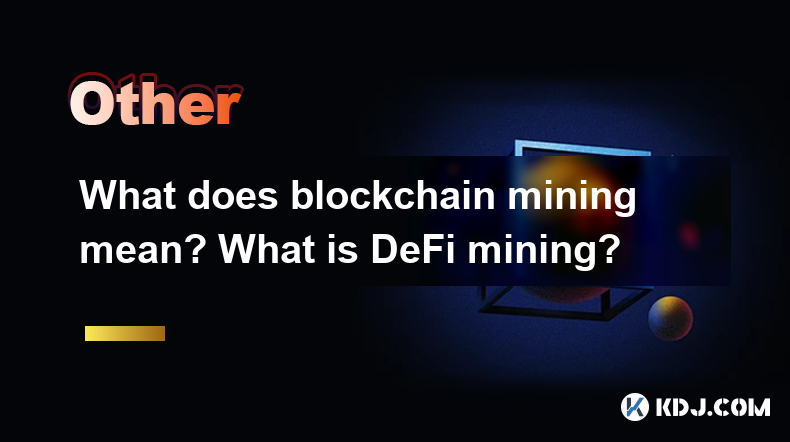
Blockchain mining and DeFi mining are two distinct concepts within the cryptocurrency ecosystem, each playing a crucial role in their respective domains. Blockchain mining is the process by which transactions are verified and added to the public ledger, known as the blockchain. This process is essential for maintaining the integrity and security of the network. On the other hand, DeFi mining, or yield farming, refers to the practice of earning rewards by providing liquidity to decentralized finance protocols. Both types of mining are pivotal in driving the functionality and growth of their respective systems.
What is Blockchain Mining?
Blockchain mining is the backbone of many cryptocurrencies, including Bitcoin. It involves solving complex mathematical problems to validate transactions and add them to the blockchain. Miners use powerful computers to compete in solving these problems, and the first to solve the puzzle gets to add a new block to the chain and is rewarded with cryptocurrency. This process not only secures the network but also introduces new coins into circulation.
How Does Blockchain Mining Work?
Blockchain mining works through a process known as Proof of Work (PoW). Here's how it unfolds:
- Transaction Verification: When a user initiates a transaction, it is broadcast to the network.
- Mining Competition: Miners collect these transactions into a block and compete to solve a cryptographic puzzle.
- Block Addition: The first miner to solve the puzzle adds the block to the blockchain and is rewarded with newly minted cryptocurrency and transaction fees.
- Network Security: This process ensures the blockchain's integrity, as altering past transactions would require re-mining all subsequent blocks, which is computationally infeasible.
The difficulty of the puzzles adjusts periodically to maintain a consistent block addition rate, ensuring the network remains secure and stable.
Importance of Blockchain Mining
Blockchain mining is crucial for several reasons:
- Security: It prevents double-spending and maintains the integrity of the blockchain.
- Decentralization: It ensures that no single entity can control the network, as mining is distributed among many participants.
- New Coin Issuance: It introduces new coins into circulation, which is essential for the growth of the cryptocurrency.
Without miners, the blockchain would not be able to function as a secure and decentralized ledger, undermining the very foundation of cryptocurrencies.
What is DeFi Mining?
DeFi mining, also known as yield farming or liquidity mining, is a process within the decentralized finance (DeFi) ecosystem where users provide liquidity to DeFi protocols and earn rewards in return. These rewards can be in the form of the protocol's native token or other cryptocurrencies. DeFi mining has become a popular way for users to earn passive income and participate in the growth of DeFi platforms.
How Does DeFi Mining Work?
DeFi mining operates on the principle of providing liquidity to decentralized exchanges and lending platforms. Here's a breakdown of the process:
- Liquidity Provision: Users deposit their cryptocurrencies into a liquidity pool on a DeFi platform.
- Earning Rewards: In return, they receive tokens representing their share of the pool and earn rewards based on the pool's performance.
- Token Swaps: Other users can then use these pools to swap tokens, and the liquidity providers earn a portion of the transaction fees.
- Staking and Governance: Some platforms also allow users to stake their earned tokens to participate in governance and earn additional rewards.
DeFi mining is a dynamic and often lucrative way to engage with the DeFi ecosystem, but it also comes with risks such as impermanent loss and smart contract vulnerabilities.
Types of DeFi Mining
There are several types of DeFi mining, each with its own mechanics and rewards structure:
- Liquidity Mining: Users provide liquidity to decentralized exchanges and earn tokens as rewards.
- Staking: Users lock up their tokens in a protocol to support its operations and earn staking rewards.
- Yield Farming: Users move their assets between different DeFi protocols to maximize their returns, often involving complex strategies.
Each type of DeFi mining offers unique opportunities and challenges, making it important for participants to understand the specifics of each protocol they engage with.
Differences Between Blockchain Mining and DeFi Mining
While both blockchain mining and DeFi mining involve earning cryptocurrency, they serve different purposes and operate under different mechanisms. Blockchain mining is focused on securing the blockchain and introducing new coins, while DeFi mining is centered around providing liquidity and earning rewards from DeFi protocols. Here are some key differences:
- Purpose: Blockchain mining secures the network and introduces new coins, while DeFi mining provides liquidity and earns rewards from DeFi platforms.
- Mechanism: Blockchain mining involves solving complex puzzles, while DeFi mining involves depositing assets into liquidity pools.
- Rewards: Blockchain miners earn newly minted coins and transaction fees, while DeFi miners earn tokens from the protocols they provide liquidity to.
Understanding these differences is crucial for anyone looking to engage in either type of mining.
Risks and Rewards of Blockchain Mining
Blockchain mining can be a lucrative endeavor, but it comes with its own set of risks and rewards. Here's a closer look:
Rewards
- Cryptocurrency Earnings: Miners earn newly minted coins and transaction fees, which can be substantial.
- Network Support: Miners play a vital role in maintaining the network's security and integrity, contributing to the overall ecosystem.
Risks
- High Initial Costs: The cost of mining equipment and electricity can be prohibitive.
- Volatility: The value of the earned cryptocurrency can fluctuate, affecting the profitability of mining.
- Difficulty Increase: As more miners join the network, the difficulty of mining increases, potentially reducing individual rewards.
Navigating these risks requires careful planning and a deep understanding of the cryptocurrency market.
Risks and Rewards of DeFi Mining
DeFi mining also offers significant rewards but comes with its own set of risks. Here's a detailed look:
Rewards
- High Yields: DeFi mining can offer high annual percentage yields (APYs), attracting many investors.
- Diverse Opportunities: The variety of DeFi protocols allows users to engage in different types of mining and maximize their returns.
Risks
- Impermanent Loss: Providing liquidity can lead to losses if the price of the assets in the pool diverges significantly.
- Smart Contract Risks: DeFi platforms are built on smart contracts, which can be vulnerable to hacks and exploits.
- Regulatory Uncertainty: The regulatory environment for DeFi is still evolving, which can pose risks to participants.
Balancing these risks and rewards is essential for successful DeFi mining.
Tools and Platforms for Blockchain Mining
Several tools and platforms are available to help miners get started and optimize their operations. Here are some popular options:
- Mining Hardware: Specialized ASIC (Application-Specific Integrated Circuit) miners are designed for efficient mining of specific cryptocurrencies.
- Mining Software: Software like CGMiner and EasyMiner helps manage mining operations and connect to mining pools.
- Mining Pools: Platforms like Slush Pool and Antpool allow miners to combine their resources and share rewards, increasing their chances of earning cryptocurrency.
Choosing the right tools and platforms is crucial for maximizing the efficiency and profitability of blockchain mining.
Tools and Platforms for DeFi Mining
DeFi mining also requires the use of specific tools and platforms. Here are some key options:
- Decentralized Exchanges (DEXs): Platforms like Uniswap and SushiSwap allow users to provide liquidity and earn rewards.
- Lending Platforms: Platforms like Aave and Compound enable users to lend their assets and earn interest.
- Yield Farming Aggregators: Tools like Yearn.finance help users optimize their yield farming strategies across multiple protocols.
Utilizing these tools effectively can help maximize returns and minimize risks in DeFi mining.
Future Trends in Blockchain and DeFi Mining
The future of blockchain and DeFi mining is likely to see several significant trends:
- Increased Efficiency: Advances in mining hardware and software will make blockchain mining more efficient and accessible.
- Regulatory Developments: As governments and regulatory bodies catch up with the DeFi space, clearer guidelines may emerge, impacting DeFi mining practices.
- Integration of AI and Machine Learning: These technologies could be used to optimize mining operations and yield farming strategies, enhancing profitability.
- Growth of Layer 2 Solutions: These solutions could reduce the costs and increase the scalability of both blockchain and DeFi mining.
Staying informed about these trends can help miners and DeFi participants stay ahead of the curve and adapt to changes in the industry.
Common Questions About Blockchain Mining and DeFi Mining
What is the main purpose of blockchain mining?
The main purpose of blockchain mining is to secure the network by validating transactions and adding them to the blockchain. It also introduces new coins into circulation, contributing to the growth of the cryptocurrency.
How do miners earn cryptocurrency through blockchain mining?
Miners earn cryptocurrency by solving complex mathematical puzzles. The first miner to solve the puzzle gets to add a new block to the blockchain and is rewarded with newly minted coins and transaction fees.
What is the difference between Proof of Work and Proof of Stake?
Proof of Work (PoW) requires miners to solve complex puzzles to validate transactions, while Proof of Stake (PoS) involves validators staking their cryptocurrency to participate in the validation process. PoS is generally considered more energy-efficient than PoW.
What is impermanent loss in DeFi mining?
Impermanent loss occurs when the price of the assets in a liquidity pool diverges significantly from when they were deposited. This can lead to losses for liquidity providers compared to simply holding the assets.
How can I start DeFi mining?
To start DeFi mining, you need to choose a DeFi platform, such as a decentralized exchange or lending platform, and deposit your cryptocurrency into a liquidity pool. You will then earn rewards based on the pool's performance.
What are the risks of DeFi mining?
The risks of DeFi mining include impermanent loss, smart contract vulnerabilities, and regulatory uncertainty. It's important to thoroughly research any platform before participating.
What tools do I need for blockchain mining?
For blockchain mining, you will need specialized mining hardware (like ASIC miners), mining software (such as CGMiner), and possibly a mining pool to increase your chances of earning rewards.
How can I optimize my yield farming strategy in DeFi mining?
To optimize your yield farming strategy, you can use yield farming aggregators like Yearn.finance, which automatically move your assets between different protocols to maximize returns. Staying informed about new DeFi platforms and strategies is also crucial.
What are the future trends in blockchain and DeFi mining?
Future trends include increased efficiency in mining hardware and software, regulatory developments, the integration of AI and machine learning, and the growth of layer 2 solutions to enhance scalability and reduce costs.
Disclaimer:info@kdj.com
The information provided is not trading advice. kdj.com does not assume any responsibility for any investments made based on the information provided in this article. Cryptocurrencies are highly volatile and it is highly recommended that you invest with caution after thorough research!
If you believe that the content used on this website infringes your copyright, please contact us immediately (info@kdj.com) and we will delete it promptly.
- IRS Targets DeFi Platforms with New Reporting Rules
- 2025-04-10 17:35:13
- Byte Federal Suffers a Major Data Breach Exposing Data of Up to 58,000 Customers
- 2025-04-10 17:35:13
- EV3 Invests in Dtravel to Expand the DePIN Ecosystem
- 2025-04-10 17:30:13
- Bitcoin (BTC) Market Shows Mild Rebound, BTC Price Fluctuating in a Narrow Range
- 2025-04-10 17:30:13
- Bitcoin (BTC) and Ether (ETH) Exchange-Traded Funds (ETFs) Saw Outflows Wednesday Despite Cryptocurrencies' Price Surges
- 2025-04-10 17:25:13
- Standard Chartered Makes an Epic XRP Price Prediction
- 2025-04-10 17:25:13
Related knowledge
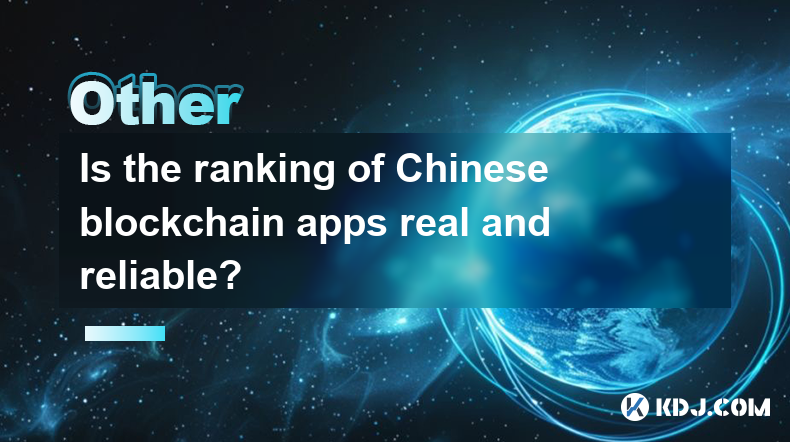
Is the ranking of Chinese blockchain apps real and reliable?
Apr 04,2025 at 09:01pm
The ranking of Chinese blockchain apps has become a topic of interest for many in the cryptocurrency community, as it provides insights into the popularity and adoption of blockchain technology within China. However, the reliability and authenticity of these rankings are often questioned. This article aims to delve into the factors that influence these ...
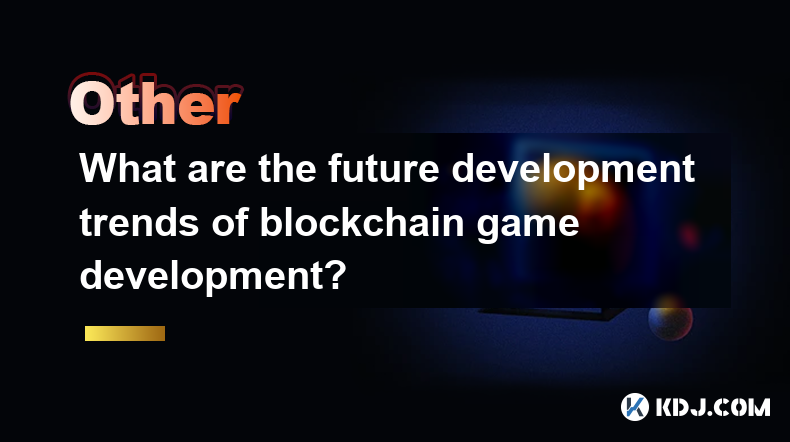
What are the future development trends of blockchain game development?
Apr 03,2025 at 05:00am
Blockchain technology has revolutionized various industries, and gaming is no exception. As we look to the future, several trends are set to shape the development of blockchain games. These trends not only promise to enhance the gaming experience but also to integrate blockchain technology more seamlessly into the gaming ecosystem. Let's explore these t...
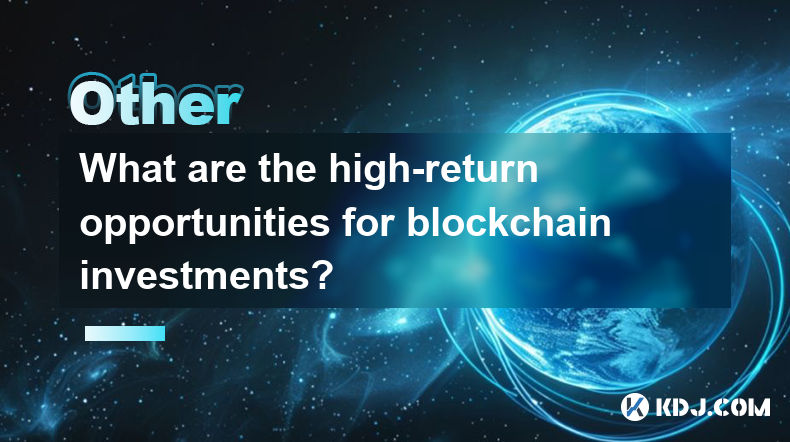
What are the high-return opportunities for blockchain investments?
Apr 05,2025 at 02:35pm
Blockchain technology has revolutionized the financial world, offering numerous high-return investment opportunities. These opportunities span various sectors within the cryptocurrency ecosystem, including cryptocurrencies, decentralized finance (DeFi), non-fungible tokens (NFTs), and blockchain startups. Each of these areas presents unique risks and re...
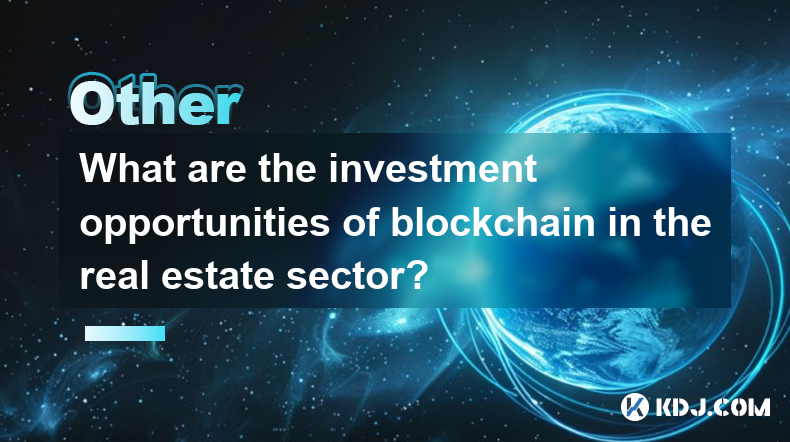
What are the investment opportunities of blockchain in the real estate sector?
Apr 10,2025 at 04:08pm
The integration of blockchain technology into the real estate sector has opened up a plethora of investment opportunities. Blockchain, a decentralized and distributed digital ledger used to record transactions across numerous computers, ensures transparency, security, and efficiency in real estate dealings. By leveraging blockchain, investors can benefi...
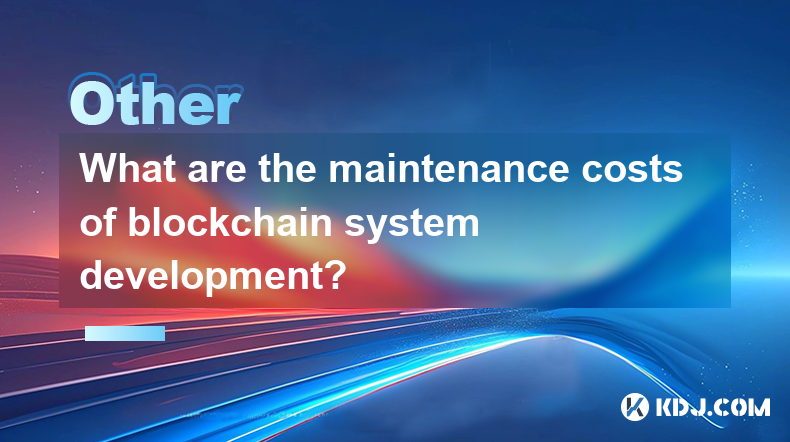
What are the maintenance costs of blockchain system development?
Apr 03,2025 at 06:07pm
The maintenance costs of blockchain system development are multifaceted and depend on various factors. These costs can include technical maintenance, security updates, infrastructure expenses, and personnel costs. Understanding these elements is crucial for anyone planning to develop or maintain a blockchain system. Technical MaintenanceTechnical mainte...
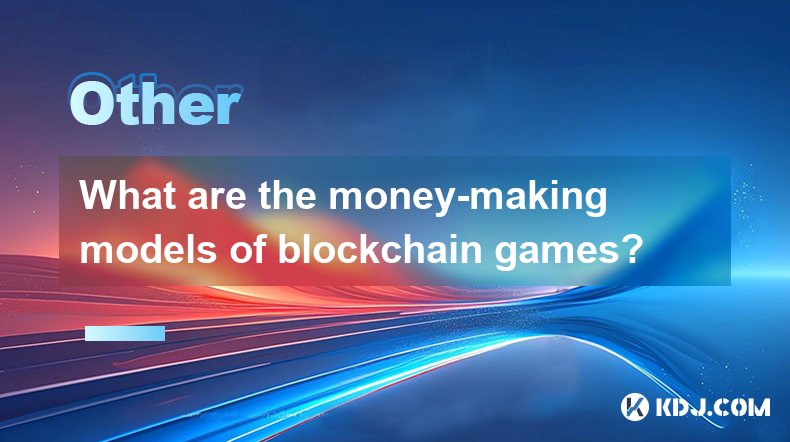
What are the money-making models of blockchain games?
Apr 04,2025 at 02:00pm
Blockchain games have emerged as a revolutionary way for players to earn real money while enjoying their favorite pastime. These games leverage the power of blockchain technology to create unique money-making models that benefit both the players and the developers. In this article, we will explore the various money-making models of blockchain games and ...

Is the ranking of Chinese blockchain apps real and reliable?
Apr 04,2025 at 09:01pm
The ranking of Chinese blockchain apps has become a topic of interest for many in the cryptocurrency community, as it provides insights into the popularity and adoption of blockchain technology within China. However, the reliability and authenticity of these rankings are often questioned. This article aims to delve into the factors that influence these ...

What are the future development trends of blockchain game development?
Apr 03,2025 at 05:00am
Blockchain technology has revolutionized various industries, and gaming is no exception. As we look to the future, several trends are set to shape the development of blockchain games. These trends not only promise to enhance the gaming experience but also to integrate blockchain technology more seamlessly into the gaming ecosystem. Let's explore these t...

What are the high-return opportunities for blockchain investments?
Apr 05,2025 at 02:35pm
Blockchain technology has revolutionized the financial world, offering numerous high-return investment opportunities. These opportunities span various sectors within the cryptocurrency ecosystem, including cryptocurrencies, decentralized finance (DeFi), non-fungible tokens (NFTs), and blockchain startups. Each of these areas presents unique risks and re...

What are the investment opportunities of blockchain in the real estate sector?
Apr 10,2025 at 04:08pm
The integration of blockchain technology into the real estate sector has opened up a plethora of investment opportunities. Blockchain, a decentralized and distributed digital ledger used to record transactions across numerous computers, ensures transparency, security, and efficiency in real estate dealings. By leveraging blockchain, investors can benefi...

What are the maintenance costs of blockchain system development?
Apr 03,2025 at 06:07pm
The maintenance costs of blockchain system development are multifaceted and depend on various factors. These costs can include technical maintenance, security updates, infrastructure expenses, and personnel costs. Understanding these elements is crucial for anyone planning to develop or maintain a blockchain system. Technical MaintenanceTechnical mainte...

What are the money-making models of blockchain games?
Apr 04,2025 at 02:00pm
Blockchain games have emerged as a revolutionary way for players to earn real money while enjoying their favorite pastime. These games leverage the power of blockchain technology to create unique money-making models that benefit both the players and the developers. In this article, we will explore the various money-making models of blockchain games and ...
See all articles





















































































